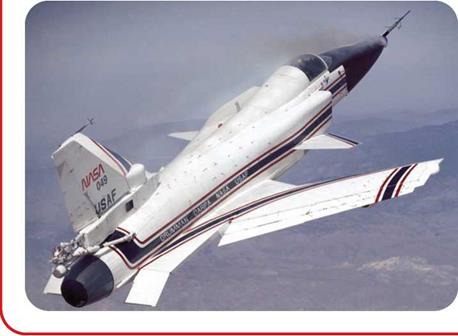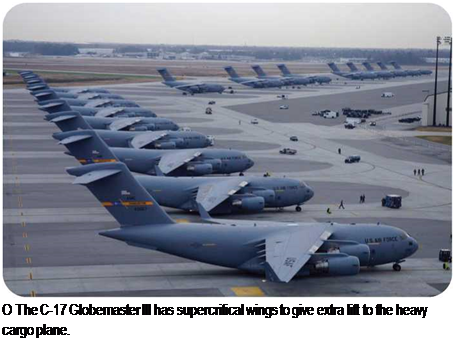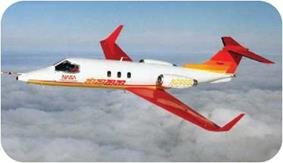Supercritical Wings
When researchers found it difficult to accelerate experimental aircraft through the sound barrier, they looked at the shape of the airplane’s wings. As a normal wing nears the speed of sound, a high-pressure shock wave forms on top
of it. This causes drag, which makes it difficult for an aircraft to go faster without using a lot more engine power. It also makes an aircraft harder to control.
Simply by changing the shape of the airfoil, the shock waves can be made smaller. Airfoils changed in this way are called supercritical wings. In a supercritical wing, the upper surface is flattened
|
WINGLETS |
The high-pressure air below a wing tries to flow around the wingtip into the low – pressure air above the wing. This makes the air spin off the wingtips and trail behind the plane. The spinning trails are called vortices. The vortices behind a big airliner are powerful enough to flip over a small plane flying behind it. Wingtip vortices also cause extra drag. Some airplanes have wingtips that are specially shaped to reduce the drag caused by vortices. Many aircraft use turned-up wingtips called winglets for this purpose.
|
О The Learjet, the first jet plane in production to use winglets, found increased range and stability with this wingtip device. |
|
A few planes have been built with wings that sweep forward to increase maneuverability. The first forward-swept wing airplanes were built in the 1940s, but their metal wings could not be made stiff enough, and so they bent. When new materials such as carbon fiber were developed, designers looked at forward-swept wings again. An experimental jet-powered aircraft with forward-swept wings, the Grumman X-29, was built in the 1980s. In Russia, the manufacturer Sukhoi has produced an experimental forward-swept wing supersonic fighter, the Su-47 Golden Eagle.
The Wright brothers solved the problem of how to steer a plane by making its wingtips bend, which is called wing warping. By twisting the wingtips on one side of the plane in one direction and the wingtips on the other side in the opposite direction, more lift was produced on one side and less on the other side, so the plane rolled into a turn. Since then, most airplanes have used ailerons instead of wing warping.
Today’s designers are still working on flexible wings, however. They now are called aeroelastic wings. The X-53 is an experimental plane with flexible wings. When wings bend, the result is usually more drag, which is not wanted. The X-53’s wings and the positions of its flaps and ailerons have been designed so that when the wings bend, the result is more lift. One advantage of flexible wings is that they can be up to one – fifth lighter than stiff wings. Flexible wings may enable future aircraft to burn less fuel, carry heavier cargo, or fly farther.
|

![]()

and the curve at the trailing edge is increased. Planes with supercritical wings can go faster with less engine power. Although supercritical wings were developed for supersonic aircraft, they also can produce a lot of lift at low speeds, so they are used by cargo aircraft. The extra lift is good for getting heavy loads off the ground at low speeds.











